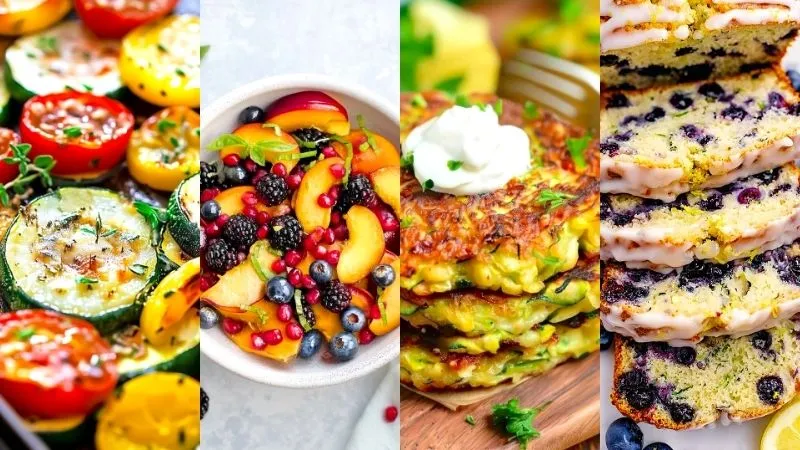Pickling vegetables at home is a time-honored tradition that brings both nostalgia and flavor to the table. Whether you’re looking to preserve the bounty of your garden or add a tangy twist to your meals, Homemade Fridge Pickled Vegetables offer a simple, versatile, and delicious solution. In this comprehensive guide, we will walk you through the step-by-step process of creating your own pickled vegetables, with a focus on achieving the perfect balance of flavors and textures.
The Rich History of Pickling
Pickling is one of the oldest methods of food preservation, dating back to ancient Mesopotamia over 4,000 years ago. Originally, the technique was used to extend the shelf life of fresh produce, especially during harsh winters. Over time, pickling evolved not just as a means of preservation but as an art form, with each culture adding its unique twist to the process. From the spicy kimchi of Korea to the tangy sauerkraut of Germany, pickling has become a global phenomenon, celebrated for its ability to enhance the natural flavors of vegetables.
Why Pickle at Home?
There are several compelling reasons to pickle your vegetables at home:
- Customization: You control the flavor profile, adjusting the sweetness, saltiness, and spice levels to suit your taste.
- Freshness: Homemade pickles are fresher, crisper, and free from preservatives or artificial additives commonly found in store-bought versions.
- Cost-Effective: Making pickles at home is an economical way to enjoy high-quality pickles without the premium price tag.
- Health Benefits: Pickled vegetables are rich in probiotics, which are beneficial for gut health, and they’re a great way to add more vegetables to your diet.
Ingredients for Perfect Pickles
To create the most flavorful and crunchy pickled vegetables, you’ll need the following ingredients:
Basic Ingredients:
- 1 cup white vinegar: The acidic base that gives pickles their signature tang.
- 1 cup water: Balances the acidity of the vinegar.
- 2 tablespoons sugar: Adds a hint of sweetness to offset the vinegar’s sharpness.
- 1 tablespoon salt: Essential for flavor and preservation.
- 2 cups mixed vegetables: Choose from carrots, cucumbers, bell peppers, cauliflower, or any other crunchy vegetable. Ensure they’re sliced or cut into bite-sized pieces for even pickling.
- 2 cloves garlic, sliced: Adds a robust, aromatic flavor.
- 1 teaspoon mustard seeds: Infuses a mild, earthy flavor and slight bitterness that complements the vinegar.
- 1 teaspoon black peppercorns: Provides a subtle heat and complexity.
- 1/2 teaspoon red pepper flakes (optional): For those who like a bit of spice in their pickles.
- Fresh dill or other herbs (optional): Herbs like dill, thyme, or rosemary can add a fresh, vibrant note to your pickles.
Step-by-Step Instructions for Making Fridge Pickled Vegetables
Step 1: Prepare the Brine
Start by preparing the brine, the essential element that will transform your fresh vegetables into pickles.
- Combine Ingredients: In a medium-sized saucepan, combine 1 cup of white vinegar, 1 cup of water, 2 tablespoons of sugar, and 1 tablespoon of salt.
- Heat the Mixture: Place the saucepan over medium heat and stir the mixture until the sugar and salt have completely dissolved. This should take about 5-7 minutes.
- Bring to a Boil: Once the sugar and salt are dissolved, bring the mixture to a boil, then remove it from the heat immediately. This boiling process ensures that the brine will properly penetrate and preserve the vegetables.
Step 2: Prepare the Vegetables
While your brine is heating, prepare your vegetables.
- Choose Your Vegetables: Select 2 cups of fresh, crisp vegetables such as carrots, cucumbers, bell peppers, and cauliflower. Ensure that the vegetables are washed thoroughly to remove any dirt or pesticides.
- Slice or Chop: Slice or chop the vegetables into uniform, bite-sized pieces. This ensures that they pickle evenly.
- Add Aromatics: Slice 2 cloves of garlic thinly and set aside. You can also prepare fresh herbs like dill if you choose to add them.
Step 3: Pack the Jar
The next step is to pack your prepared vegetables and aromatics into a jar.
- Sterilize the Jar: Before packing the vegetables, ensure that your jar is clean and sterilized. You can do this by washing the jar with hot, soapy water or running it through a dishwasher cycle.
- Layer the Ingredients: Begin by placing the sliced garlic, mustard seeds, black peppercorns, and red pepper flakes (if using) into the bottom of the jar. Then, tightly pack the vegetables into the jar, leaving a small space at the top.
- Add Herbs: If you’re using fresh dill or other herbs, tuck them in around the vegetables. The herbs will infuse the pickles with a fresh, fragrant flavor.
Step 4: Pour the Brine
Once your jar is packed, it’s time to add the brine.
- Pour the Hot Brine: Carefully pour the hot vinegar mixture over the vegetables, ensuring they are completely submerged. If necessary, use a spoon to press the vegetables down.
- Seal the Jar: Close the jar with a tight-fitting lid. This prevents air from entering and ensures that the vegetables stay submerged in the brine.
Step 5: Refrigerate and Wait
The final step is to let the pickling magic happen.
- Cool to Room Temperature: Allow the jar to cool to room temperature before placing it in the refrigerator. This prevents the jar from cracking due to the sudden temperature change.
- Refrigerate: Place the jar in the refrigerator and let the vegetables pickle for at least 2 hours. For the best flavor, allow them to pickle overnight. The longer they sit, the more intense the flavor will become.
Step 6: Serve and Enjoy
Once your vegetables are pickled to your liking, they’re ready to be enjoyed.
- Serve Chilled: Pickled vegetables are best served chilled. They make an excellent addition to sandwiches, salads, or as a side dish to grilled meats.
- Store Properly: Store the jar in the refrigerator and consume within 2 weeks. This ensures the pickles stay fresh and crunchy.
Tips for Perfect Pickles Every Time
- Use Fresh Vegetables: The fresher the vegetables, the better the pickles. Avoid using wilted or old produce, as they may not pickle well.
- Experiment with Flavors: Don’t be afraid to experiment with different herbs, spices, and vegetables. The basic brine recipe can be adapted to suit a variety of flavor profiles.
- Maintain Proper Submersion: Always ensure that the vegetables are completely submerged in the brine. This prevents mold from forming and ensures even pickling.
Conclusion
Homemade Fridge Pickled Vegetables are a simple and rewarding way to preserve the vibrant flavors of your favorite vegetables. With a few basic ingredients and some patience, you can create a jar of delicious, tangy pickles that will add a burst of flavor to any dish. Whether you’re a seasoned pickle-maker or a beginner, this recipe is sure to become a staple in your kitchen.


